In today's highly competitive business landscape, optimizing manufacturing processes has become a crucial endeavor for organizations seeking to enhance productivity, reduce costs, and ensure overall efficiency. As manufacturing operations grow in complexity, companies are turning to sophisticated Enterprise Resource Planning (ERP) systems to streamline their processes effectively. Among these, ERPNext stands out as a versatile and comprehensive solution that empowers businesses to achieve process optimization seamlessly.
What is Lean Manufacturing?
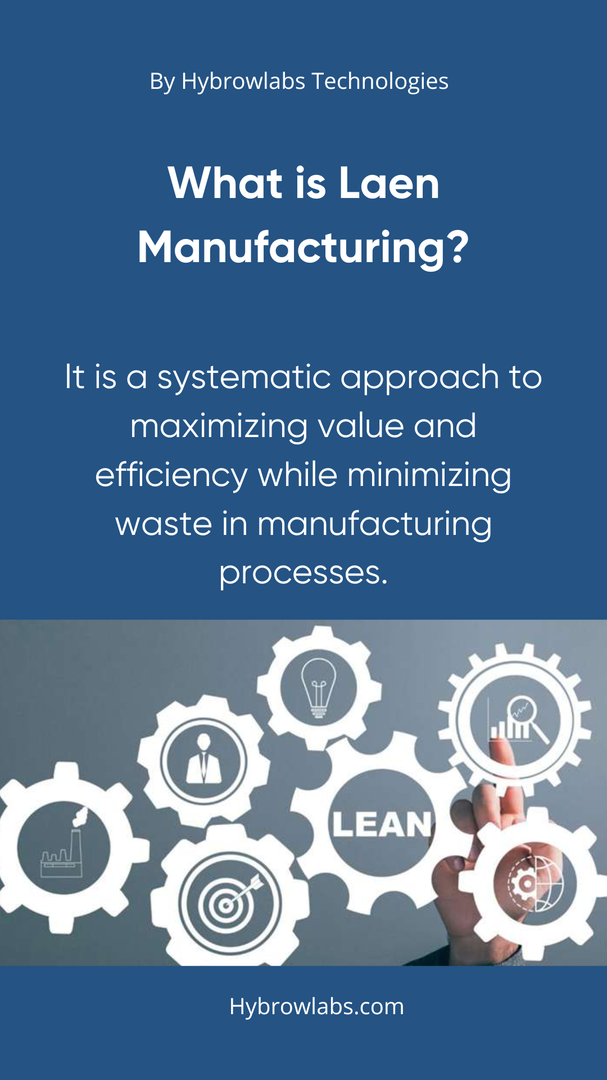
Lean Manufacturing is a systematic approach to maximizing value and efficiency while minimizing waste in manufacturing processes. It originated from the Toyota Production System and aims to improve productivity, quality, and responsiveness by continuously identifying and eliminating non-value-adding activities and streamlining workflows. Lean principles emphasize customer value, employee engagement, continuous improvement, and creating an efficient culture throughout the organization.
Integrating Lean Manufacturing with ERPNext allows organizations to identify and eliminate waste, enhance workflows, and unlock the potential within their manufacturing operations. ERPNext's functionalities and real-time data analytics enable data-driven decision-making for continuous improvement. This guide provides a step-by-step approach to optimizing manufacturing processes in ERPNext, covering system configuration and Lean Manufacturing methodologies. Let's get started!
More Read- Revolutionizing Manufacturing with ERPNext: 5 Reasons Why Your Business Should Make the Switch
Why Does Your Business Need Lean Manufacturing?
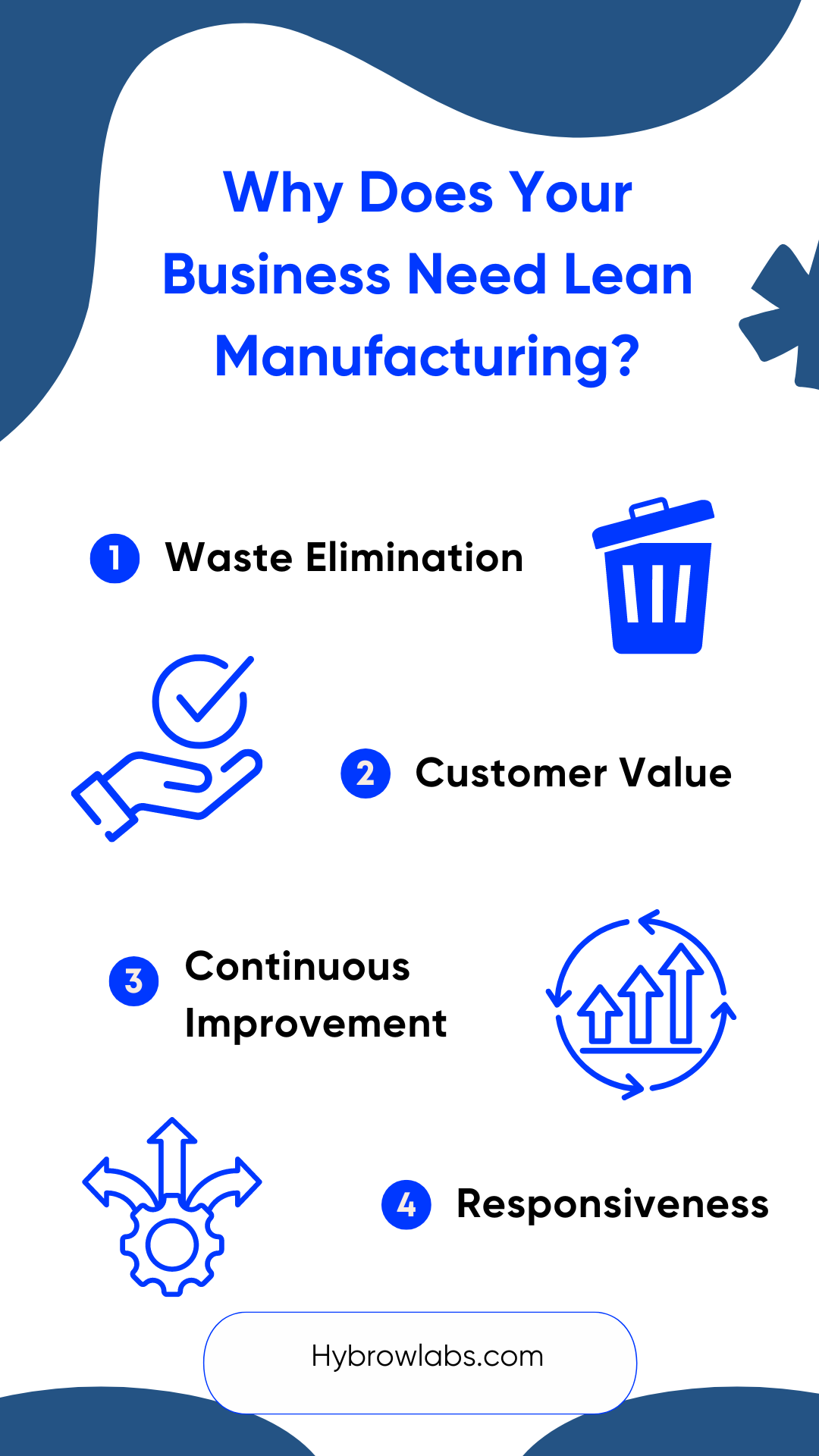
According to LNS Research, “61% of manufacturers have established or plan to establish a continuous improvement/lean manufacturing group in 2014”. Why? here are some benefits of using Lean Manufacturing in any business.
1. Customer Value:
Lean manufacturing provides products and services that meet or exceed customer expectations. Lean aims to identify what customers truly value and focus on delivering that value efficiently.
2. Waste Elimination:
It minimizes or eliminates waste in all forms, including overproduction, waiting times, excess inventory, unnecessary transportation, defects, over-processing, and underutilized employee skills. The goal is to optimize processes to deliver the right product at the right time in the right quantity.
3. Continuous Improvement:
Lean Manufacturing helps in fostering a culture of continuous improvement at all levels of the organization. Lean encourages employees to identify inefficiencies, propose improvements, and implement changes to enhance processes continually.
4. Flexibility and Responsiveness:
Creating a production system that can quickly respond to changes in customer demand and market conditions, allowing for agility in adapting to fluctuations in product requirements is another key point of Lean Manufacturing.
How to Implement Lean Manufacturing in ERPNext?
Let’s take an example of a bicycle manufacturing company that produces a wide range of bicycles, including mountain bikes, road bikes, and city bikes. The company is facing challenges related to excess inventory, longer lead times, and quality issues, which are affecting its competitiveness in the market. To address these hurdles, the company sets out on a journey to adopt Lean Manufacturing principles, integrating them with the advanced ERPNext system. With a goal to streamline operations and enhance overall efficiency, the company aims to optimize manufacturing processes and achieve sustainable growth in the dynamic market landscape. Now to take the most advantage of the manufacturing processes with Lean Manufacturing principles in ERPNext, let's learn how to implement lean manufacturing in ERPNext!
Step 1: Understand Current Manufacturing Processes
a) Assess Current Workflows:
Review your existing manufacturing processes in ERPNext. Identify areas where inefficiencies, waste, and bottlenecks occur.
b) Analyze Reports:
Utilize ERPNext's reporting and analytics capabilities to gather data on cycle times, lead times, inventory levels, and defect rates. This data will serve as a baseline for improvements.
Step 2: Define Lean Objectives
a) Set Specific Goals:
Based on the assessment, define clear objectives for lean implementation in ERPNext. Examples could include reducing lead times, optimizing inventory levels, or improving production cycle times.
b) Align with Business Goals:
Ensure that the lean objectives align with your overall business goals and strategic direction.
Step 3: Create a Lean Implementation Team
a) Form a Cross-Functional Team:
Establish a team with representatives from various departments, such as manufacturing, inventory, procurement, and quality control.
b) Assign Responsibilities:
Clearly define roles and responsibilities for each team member. Designate a project leader or coordinator to oversee the implementation.
Step 4: Log in to ERPNext
Open your web browser and navigate to the ERPNext login page. Enter your credentials (username and password) to access the ERPNext system.
Step 5: Configure ERPNext for Lean Manufacturing
As an administrator or a user with sufficient permissions, click on the "Setup" module from the ERPNext dashboard. Under the "Manufacturing" section, configure the following settings to support lean manufacturing principles:
a) Item Groups:
Create relevant item groups in ERPNext to categorize products, components, and assemblies. To set up Item Groups, go to "Setup > Item Groups." Create relevant item groups to categorize products, components, and assemblies. For example, create "Finished Goods" and "Raw Materials" Item Groups.
b) Warehouses:
Establish multiple warehouses in ERPNext to segregate inventory based on location or production stage. To create warehouses, go to "Setup > Warehouses." Set up multiple warehouses if necessary to segregate inventory based on location or production stage.
c) Workstations:
Set up workstations or production lines in ERPNext to represent different stages in the manufacturing process. To define workstations, go to "Setup > Workstations." Define workstations or production lines, representing different stages in the manufacturing process.
d) Bill of Materials (BOMs):
Create detailed BOMs for each product in ERPNext, specifying the required components, quantities, and routing information. To create BOMs, go to "Items > BOMs." Create detailed BOMs for each product, specifying the required components, quantities, and routing information.
e) Routing:
To set up routing operations, go to "Items > Operations." Define the sequence of tasks required to complete the manufacturing process for each product.
Step 6: Implement 5S in the Workplace
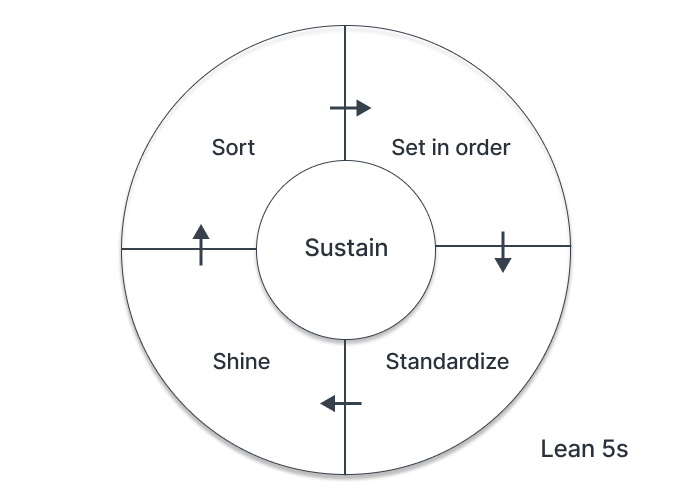
The 5S methodology is an essential part of lean manufacturing because it provides a structured and systematic approach to organize the workplace, eliminate waste, and create a foundation for continuous improvement. Educate your employees about the 5S methodology and its benefits. In the bicycle manufacturing facility, follow these steps:
a) "Sort": Organize workstations by removing any unnecessary tools or equipment that do not contribute to the production process.
b) "Set in Order": Arrange the remaining tools and materials in a logical and efficient manner for easy access and reduced search time.
c) "Shine": Establish a regular cleaning and maintenance routine to ensure a safe and clutter-free workspace that promotes productivity.
d) "Standardize": Create guidelines and Standard Operating Procedures (SOPs) for maintaining the 5S principles consistently throughout the production area.
e) "Sustain": Establish a culture of continuous improvement, where employees uphold the 5S practices daily and actively contribute to maintaining an organized workplace.
And also follow this additional step:
f) "Safety": Emphasize safety protocols to reduce workplace accidents and injuries. Implement safety checks and incorporate safety guidelines into Standard Operating Procedures (SOPs).
Step 7: Establish Pull Systems (Kanban)
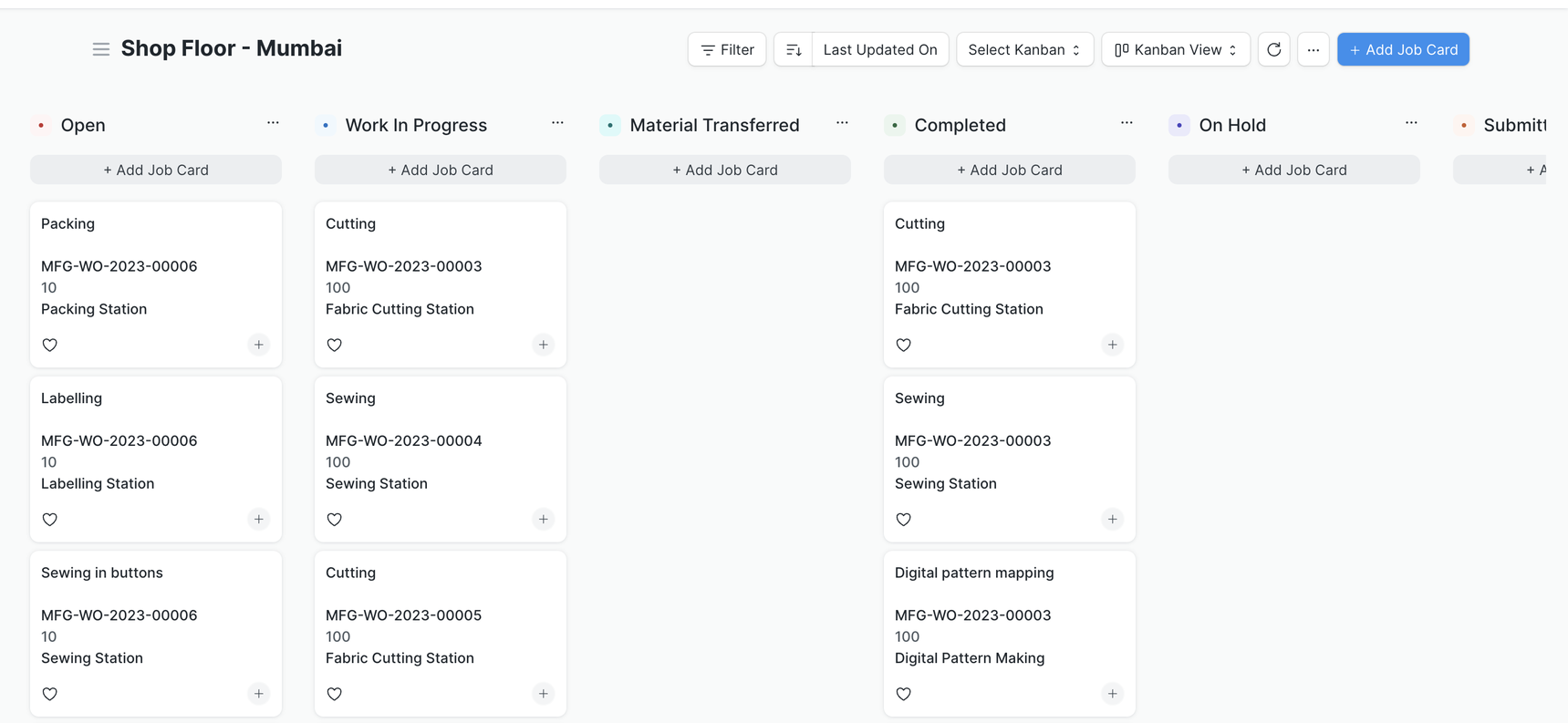
Implementing Pull Systems (Kanban) is an effective way to align production with actual demand, reduce waste, and enhance efficiency in the manufacturing process. Identify high-consumption items in bicycle production, such as wheels and gears. Implement a Kanban system within ERPNext for these items:
a) "Kanban Cards":
To create Kanban cards, go to "Manufacturing > Kanban > New." Set up Kanban cards for items with high consumption rates, such as wheels. When the inventory of wheels reaches a predefined level, ERPNext will automatically generate a production order to replenish the stock.
b) "Batch Size Optimization":
Continuously review and adjust Kanban quantities based on consumption patterns to optimize production batch sizes and minimize waste.
Step 8: Implement Just-in-Time (JIT) Production
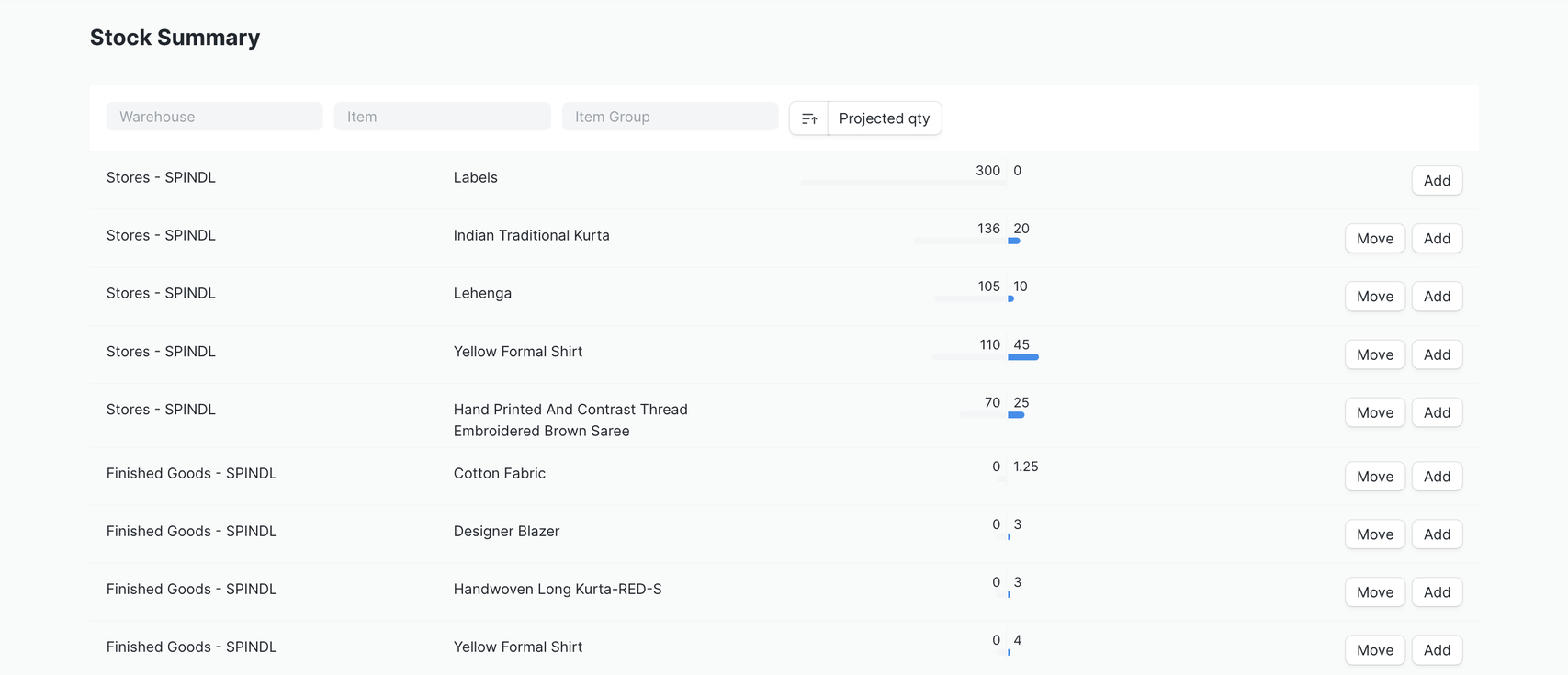
By producing goods based on actual customer demand, JIT reduces excess inventory, leading to better cash flow, lower storage costs, and improved responsiveness to customer needs. The streamlined production flow and emphasis on quality contribute to higher customer satisfaction and employee engagement. JIT also fosters strong supplier relationships and aligns with the continuous improvement philosophy, resulting in cost savings, reduced lead times, and environmental benefits through efficient resource usage.
Utilize the Production Planning module in ERPNext to create a production schedule based on customer demand for specific bicycle models:
a) "Production Planning":
To access the Production Planning module, go to "Manufacturing > Production Planning." Create a production schedule based on real-time sales orders to avoid overproduction and reduce excess inventory.
b) "JIT Delivery":
Collaborate with suppliers to implement JIT delivery practices. This ensures that materials are delivered just in time for production, reducing inventory carrying costs and lead times.
Step 9: Continuous Improvement

Regularly conduct improvement meetings with employees to discuss challenges and brainstorm potential solutions. Use ERPNext reports and analytics to gather data on production efficiency, defect rates, cycle times, and other relevant metrics to identify areas that require improvement:
a) "Reports and Analytics":
To access reports and analytics, go to "Reports > Analytical Reports." Utilize ERPNext's built-in reports or create custom reports to monitor key performance indicators (KPIs) related to Lean Manufacturing.
b) "Kaizen Events":
Organize Kaizen events to address specific improvement opportunities. Encourage cross-functional teams to participate in these events for comprehensive problem-solving.
Step 10: Train Employees
Provide comprehensive training to employees on effectively using ERPNext for their roles in the bicycle manufacturing process:
a) "Employee Training Records":
To track employee training, go to "HR > Training > New." Record all training provided to employees, including ERPNext usage training.
b) "Lean Awareness Training":
Conduct regular lean awareness training for all employees to foster a culture of continuous improvement and encourage innovative thinking.
Step 11: Monitor and Measure Performance
Utilize ERPNext dashboards and reports to track key performance indicators (KPIs) related to Lean Manufacturing:
a) "Dashboards":
To access ERPNext dashboards, go to "Dashboard > Dashboard Home." Create custom dashboards or utilize existing ones to monitor metrics such as lead times, production cycle times, inventory levels, defect rates, and other performance measures.
b) "Visual Management":
Implement visual management tools, such as production dashboards and Andon boards, to provide real-time visibility into production performance and make it easier for employees to identify and respond to issues promptly.
Step 12: Adapt and Evolve
Based on data analysis and continuous improvement efforts, make necessary adjustments to the bicycle manufacturing processes and ERPNext configuration. Continuously adapt and evolve the system to maximize the benefits of Lean Manufacturing, making it an ongoing and iterative approach to achieve operational excellence:
a) "Value Stream Mapping":
Conduct value stream mapping exercises to identify waste and inefficiencies in the production process. Use the insights gained to make data-driven decisions for process optimization.
b) "Supplier Collaboration":
Collaborate with key suppliers to improve the overall supply chain efficiency. Encourage them to adopt lean principles, such as Kanban and JIT, to support your lean manufacturing efforts.
Conclusion:
In conclusion, integrating Lean Manufacturing principles in ERPNext empowers organizations to foster a culture of continuous improvement, minimize waste, and maximize efficiency across their manufacturing processes. By leveraging the capabilities of ERPNext in conjunction with Lean methodologies, businesses can enhance productivity, reduce costs, and enhance customer satisfaction, positioning themselves as leaders in their industry. With a commitment to Lean principles and ERPNext's powerful features, organizations embark on a transformative journey toward operational excellence and sustainable success in the ever-evolving market landscape. Partner with Hybrowlabs to accelerate your manufacturing business. Our expert team will take of your problems and give you the best solution with a friendly budget, 24*7 support & fast delivery. Contact us now!!!
FAQ:
1. How long does it take to implement Lean Manufacturing in ERPNext?
The duration of the implementation process depends on the complexity of the manufacturing processes, the size of the organization, and the level of commitment to Lean principles. In some cases, it may take several months to integrate Lean practices into ERPNext fully.
2. Can Lean Manufacturing in ERPNext be scaled for large organizations?
Yes, Lean Manufacturing in ERPNext is scalable and can be adapted to suit the needs of large organizations with complex manufacturing operations. ERPNext's modular design and customizable features make it suitable for enterprises of varying sizes and industries.
3. How can ERPNext support continuous improvement efforts?
ERPNext provides real-time data on key performance indicators (KPIs) and process metrics, allowing organizations to monitor progress and identify areas for improvement. It also facilitates collaboration among teams to share ideas and suggestions for enhancement.
4. Can ERPNext help in reducing lead times and production cycle times?
ERPNext's production planning and scheduling features can help optimize production workflows, reducing lead times and production cycle times. By synchronizing production with customer demand and using JIT principles, organizations can minimize waiting times and overproduction.
5. Can Lean Manufacturing in ERPNext be applied to all types of industries?
Yes, Lean Manufacturing principles can be adapted and applied to various industries, including manufacturing, service, healthcare, and software development. ERPNext's flexibility allows customization to suit the specific needs of different industries.



.png)


a3dc85.jpg)

.jpg)
fd8f11.png)

.jpg)
.jpg)